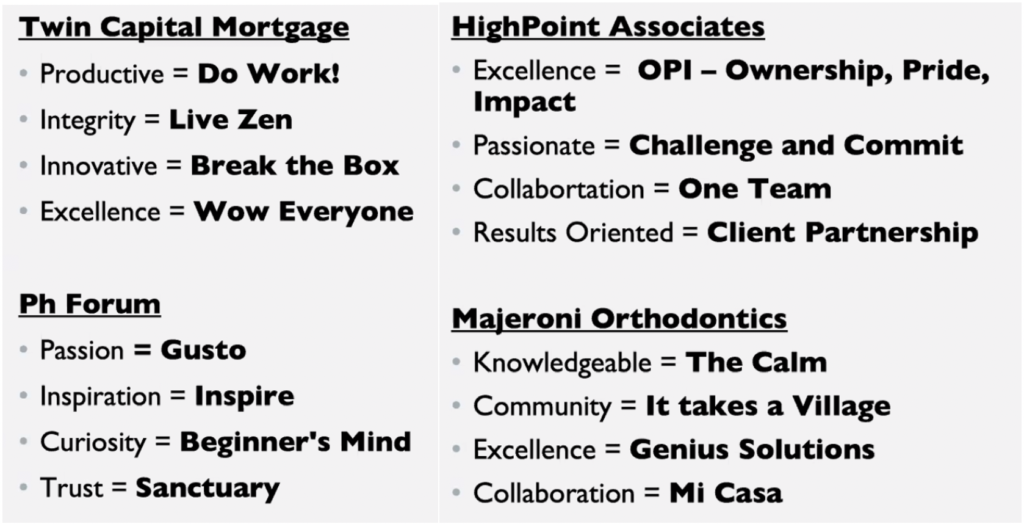Recently, Petra Coach presented a webinar, “The Core Value Equation” with Darius Mirshahzedah.
If you’re a business leader, this information is crucial to creating and maintaining a strong foundation for your organization.
You can find the full recording here.
Order your copy of The Core Value Equation HERE. To augment the recording, we noted takeaways and tips from the presentation.
Top Takeaways
Your Core Values are the most valuable asset that you have.
The Core Value Equation
Core Values = Words = Conversations = Decisions = Actions = Results
Therefore, Core Values = Results
If you can define your values, everything that happens in your life is a direct correlation of your values – whether it be good or bad
Your Core Values Should Be…
- Able to be stated by your whole team
- Promoted to your customers
- Memorable
Why Companies Fail at Core Values
- Weak implementation
- Mediocre rollout
- Discovery process
- They just become words on paper
5 Part Process of Finding the Core Values
- Discovery Process → Core values don’t have to be nice. They need to be authentic to the company.
- Design Process → Sticky and viral, must be memorable to the team – make a sign for the office, put them on the website.
- Roll out Process → Wedding: you want them to fall in love with the CV’s, make it all about them and then make it about the company. Make sure that the Core Values are visible to the company – on the wall, on the website, in your email signature.
- Implementation Process → Marriage: Have them forget about their past experiences, take a full day to do this. Make it thought out and strategic and keep it simple. This is more detailed in the book.
- Measurement Process → NPS, eNPS, Core Value rating – team rating.
How to Get Your Team to Remember the Core Values
- Miller’s Law: Most adults can store between 5 and 9 items in their short-term memory
- Choose a word and then you can have a meaning behind those words
- Use “6-pack words” – If you had a six pack with someone else, how would you talk – Don’t make them too fancy
- Use words that you would use normally
Examples:
After you have the main descriptive words, build out the meaning behind them.
Like what you see? Register for our upcoming webinars today!






